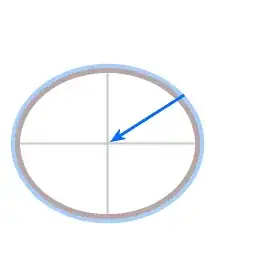I am a self learnt dude and i have seen and studied the derivation of coriolis force of the earth using vector algebra;
But I tried to derive it using only scalars and also started doing it; but got stuck.. Here is what i tried :
If an object is moved in a direction perpenndicular to the angular velocity of the sphere; it's linear velocity stays constant; But the angular velocity also stays constant. this causes the object to deflect a bit towards the direction of the rotation of the sphere. This is the concept i will use to derive the formula
Radius of motion of the object on earth on a latitude $\varphi$: $$ R_E \cos \varphi$$
Linear velocity of the object: $$\omega_E R_E \cos \varphi$$
When the object's latitude changes (increases in this case)($d\varphi$ refers to change in latitude): $$\omega _ E R_E \cos(\varphi + d\varphi)$$
Relative motion of the object(motion due to the fictitious coriolis force): $$\omega_E R_E \cos \varphi - \omega_E R_E \cos (\varphi + d\varphi)$$
and when using identity of cosine, it becomes:$$\omega_E R_E \cos \varphi - \omega_E R_E \cos \varphi \cos d\varphi - \omega _ E R_E \sin \varphi \sin d\varphi $$
and after factoring: $$(\omega_E R_E \cos \varphi)(1-\cos d\varphi - \tan \varphi \sin d\varphi)$$
Now let the speed of the body moving perpendicularly on earth be $v$
and the time taken for all of this events : $dt$
now we know that : $vdt=R_E d \varphi$
therefore, $d\varphi = \frac{vdt}{R_E}$
(lets call $\frac{v}{R_E}$ as $k$)
subsitute that into the main equation and find acceleration(change in velocity/time) : $$\frac {(\omega_E R_E \cos \varphi)(1-\cos d\varphi - \tan \varphi \sin d\varphi)}{dt}$$
which becomes :
$$ (\omega_E R_E \cos \varphi) \left( \frac{1- \cos k dt - \tan \varphi \sin k dt}{dt}\right)$$
I am unable to simplfy beyond this, Can anybody help?
